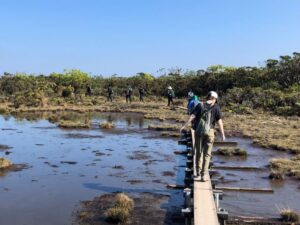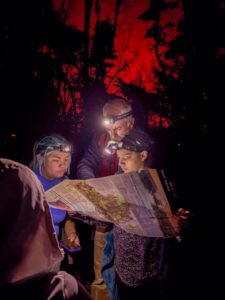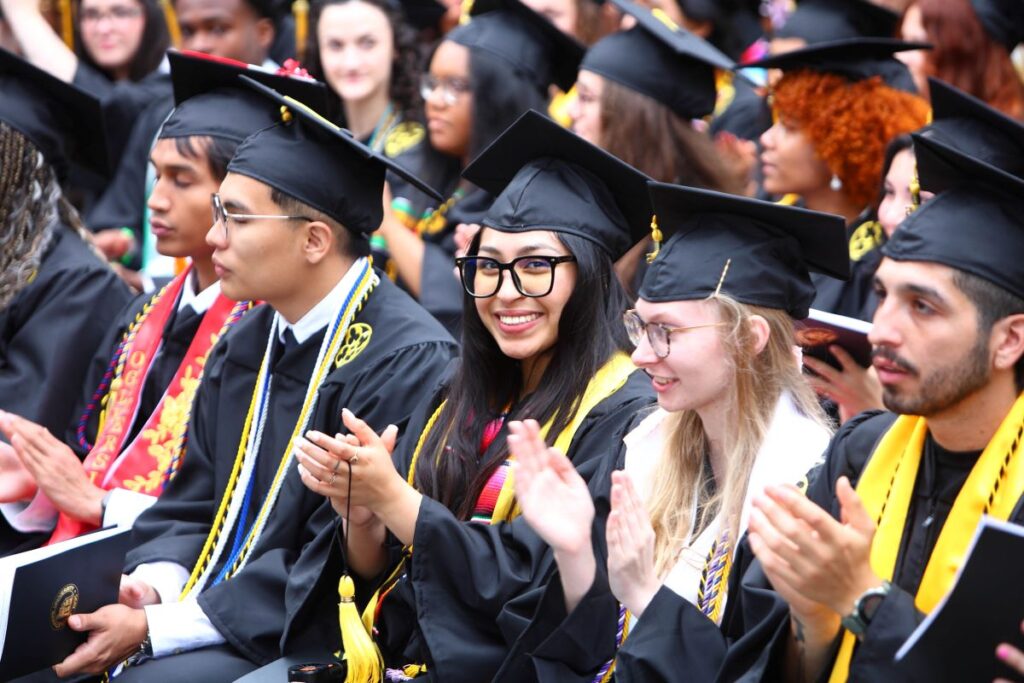According to experts, Earth’s biodiversity is in a state of crisis.
Species are disappearing at an alarming rate, and more than one million plants and animals are estimated to go extinct in the next hundred years. Worse, human population growth has exploded. The strain on the planet’s natural resources shows no signs of abating, and our society relies on thriving ecosystems for consistent, sustainable access to food, shelter, energy and medicine.

Protecting wild species and their habitats is more important than ever—and Oglethorpe students are learning how to step up to the task. Earlier this winter, ten Petrels took a trip to Hawaii for a special conservation biology course where they learned how to apply actual conservation tactics to combat threats to biodiversity.
“We travel 4500 miles to Hawaii to study conservation biology because this archipelago is aptly described by a host of superlatives—the tallest and most active volcanoes; oldest, longest, and most isolated archipelago; greatest threats to endemic species,” says Professor of Biology Dr. Roarke Donnelly, who leads the trip.
“We live, breathe, hike and snorkel across the youngest and one of the oldest high islands in the archipelago to reconnect with nature, ourselves and our effective stewardship of nature.”
It was an invaluable opportunity to witness years of conservation efforts in action. Students hopped from island to island, volunteering with local conservation non-profits, learning about Hawaiian culture, and exploring miles of vast, natural beauty brimming with wildlife unlike anything they could see in Atlanta.
In fact, they handled many native plants and animals directly, including some threatened and rare species like the Hawaiian monk seal and the green sea turtle.
Students learned to identify invasive, non-native species, too—many of which are kept in check by local non-profits. In the Oglethorpe spirit of giving back to the community, students volunteered with the Kaua’i Resource Conservation Program and the Kaloko-Hanokōhau National Historical Park to control Himalayan ginger and pickleweed encroaching on local ecosystems.
Hawaiian culture is closely intertwined with conservation work on the islands. Working with these organizations and learning from several “kamaʻāina,”—native Hawaiians—granted students a deeper understanding of the connection between people and the environment.

To top it all off, the students experienced a multiple-day eruption of one of the world’s most active volcanoes: Kilauea. Eruptions can be sporadic, and the volcano can be inactive for months. However, during their trip, these students were fortunate enough to witness lava fountains as tall as 120 ft.
In all, the trip was a profound experience for these young scientists.
“You cannot get the beauty of Hawaii through pictures—seeing it in person was just a completely different experience,” says Hana Sato ’25. “The trip helped me grow as a scientist, and I realized after the trip that I really want to pursue something in conservation and helping protect endemic species.”







